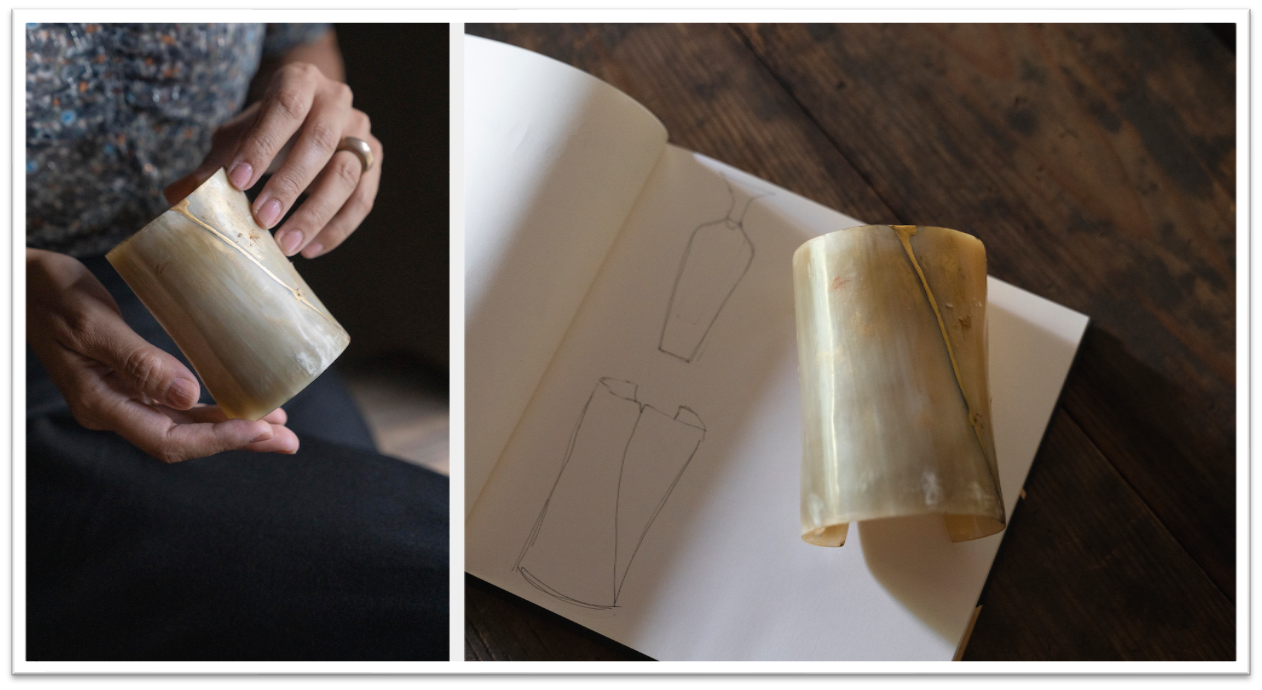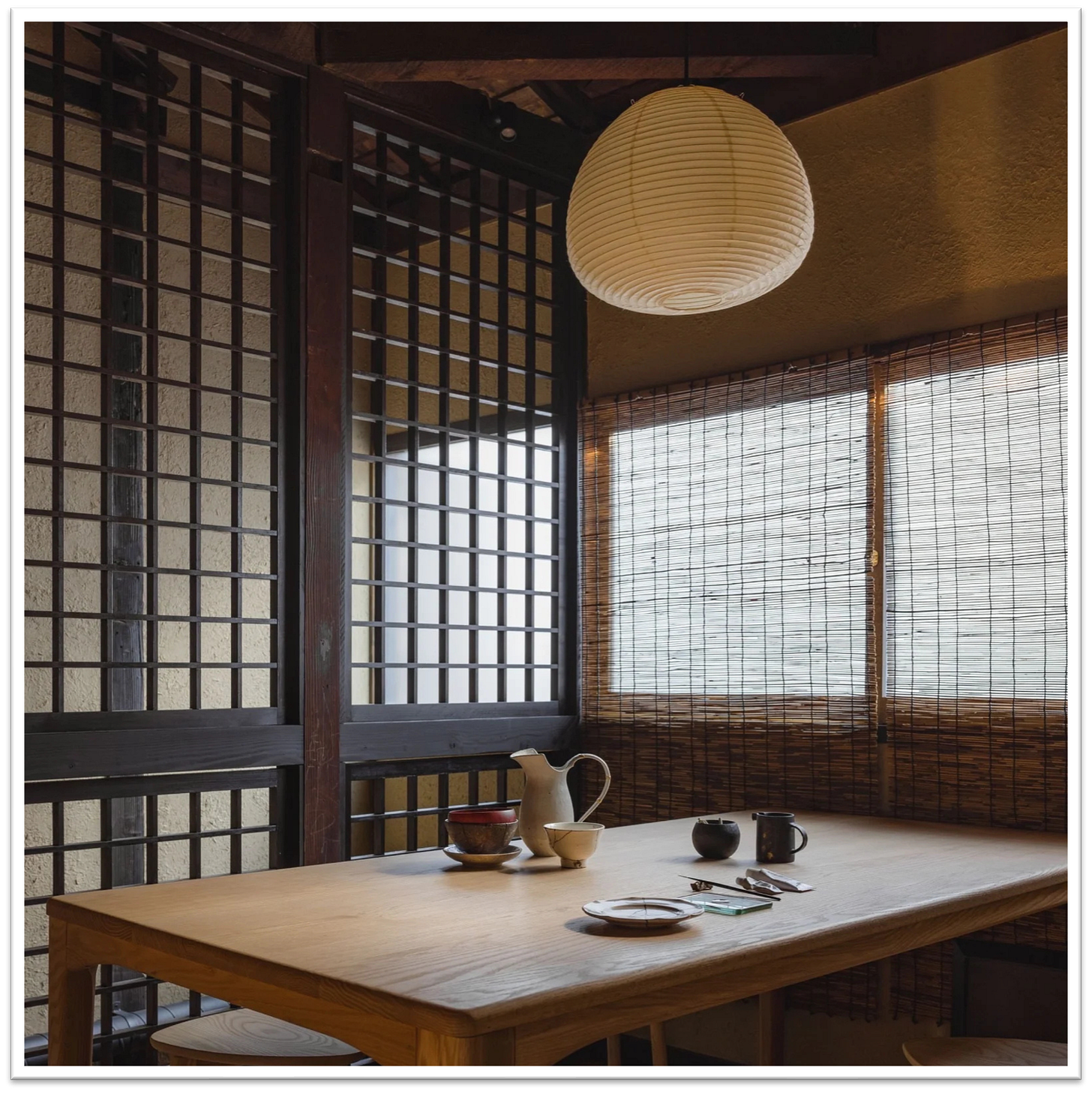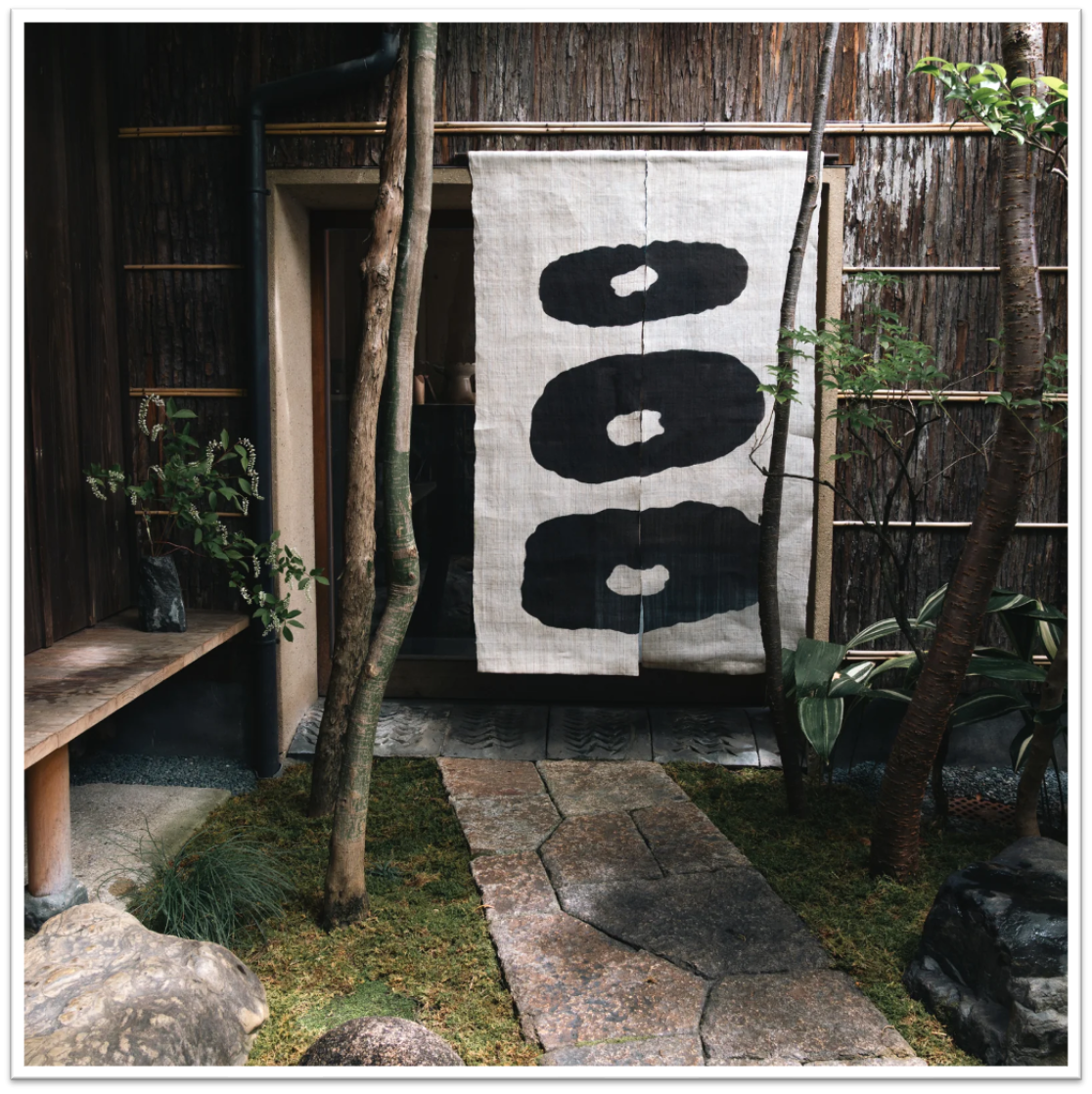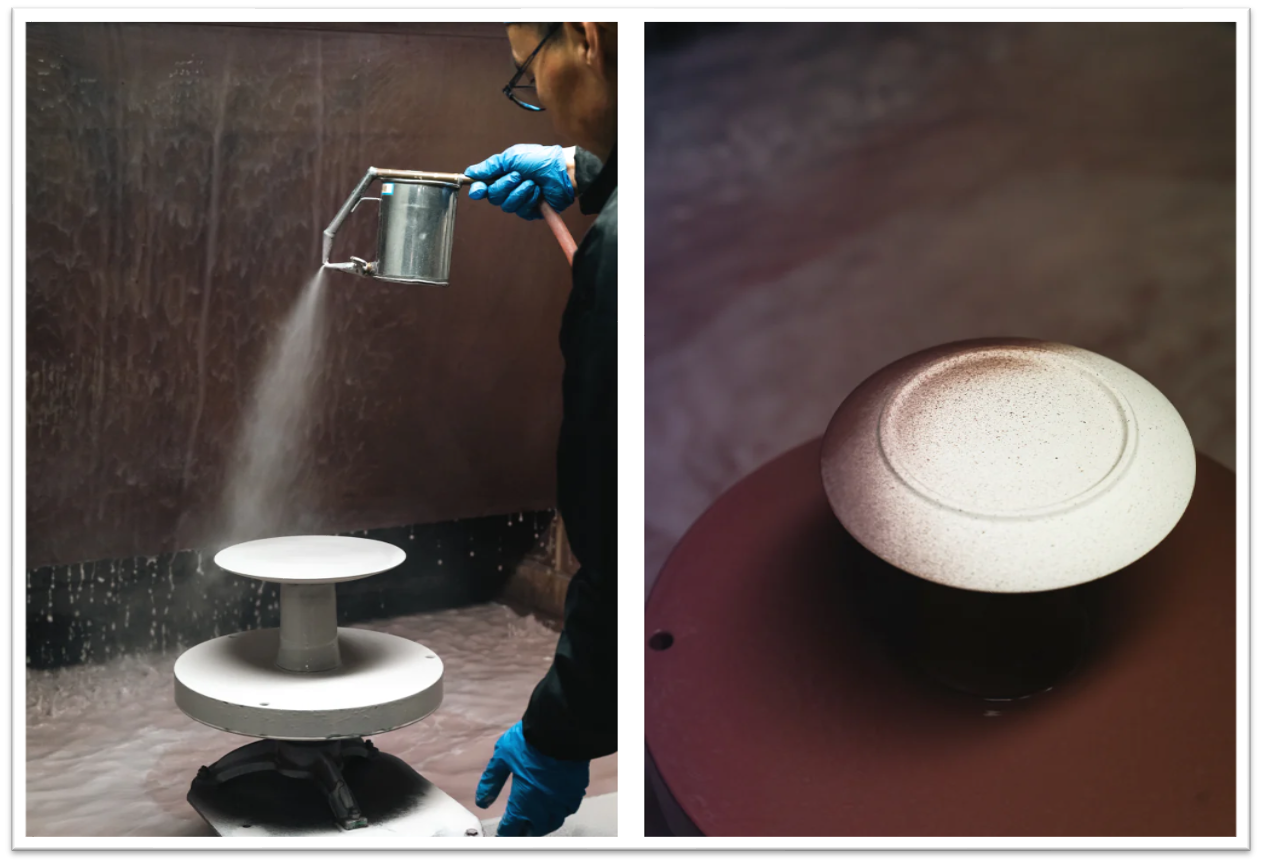Analog Renaissance: From Silicon Valley to Kyoto
How Tina Koyama Is Saving Japan’s Craft
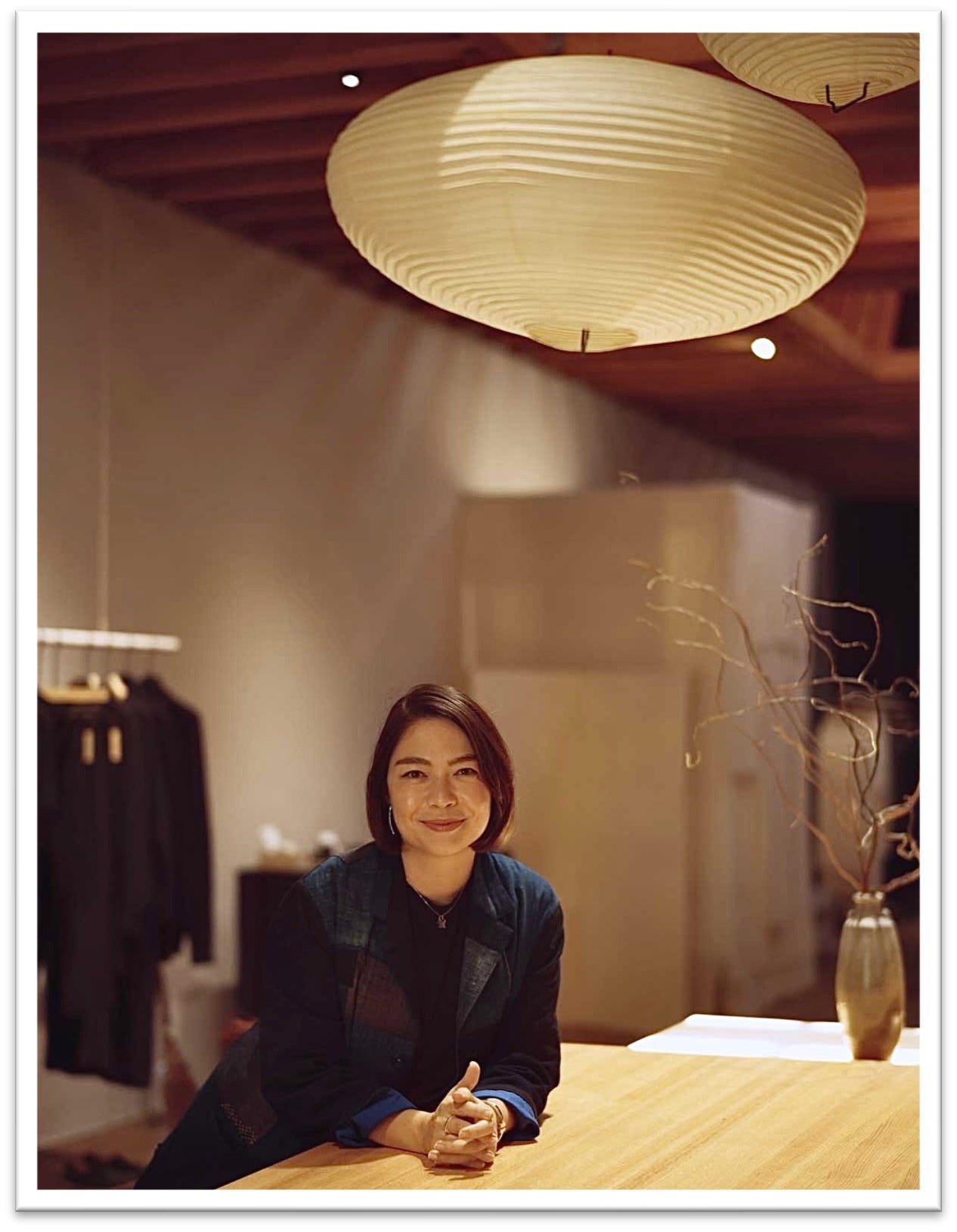
Hi there,
I recently learned that across Japan, less than 1 in 5 craftspeople today have a successor, and what they create may never be made again. The population is shrinking, the number of artisans has dropped from over 280,000 in the 1980s to about 60,000 today, and entire lineages of skill and beauty may vanish within a single generation.
Enter Tina Koyama, the Swiss Japanese founder of POJ Studio. After a decade in Silicon Valley and inspired by her mother, Tina returned to Japan where she began building bridges between East and West, digital and physical, and innovation and tradition. In my conversation with Tina (scroll down to read and to enjoy her beautiful photos), she shared how she collaborates directly with artisans to create pieces that honor tradition while providing exquisite items for modern living. She explains why she chose kintsugi (he Japanese art of golden repair) to start her business, her approach to supporting craftspeople’s vision, her commitment to the Kintsugi Classes and Apprentice Program, her newly launched POJ Interiors and so much more.
POJ Studio is bringing its world of craftsmanship to New York City with a pop-up at 180 The Store in Tribeca. If you are in NYC make sure to visit to experience their collection in person, or shop their selection of ceramics, textiles, and homeware online. (I bought incredibly light wooden trays and boxes, indigo linen wall hanging art by artist Kiyoe Masao, and a very special amulet (I posted photos of my visit on Instagram). Beyond objects, if you are interested in becoming a craftsperson yourself or dab in some of the techniques, POJ offers hands-on ways to engage with tradition in Kyoto and the U.S., like the Kintsugi repair workshops, brush-making classes, and woodworking apprenticeship .
As the world races toward automation, it feels essential and urgent to hold something real, something shaped by another person’s hands. Craft reminds us that beauty takes time, that emotion can live inside an object, that touch still matters.
Tina’s work isn’t just about preserving a tradition; it’s about protecting our ability to be human. Maybe this is what humanity needs: an Analog Renaissance.
I hope you enjoy this interview - I know POJ Studio is going to change the faith of craft in Japan. You just watch.
Q&A with Tina Koyama
P: Your career began in fast-paced digital product design between Tokyo and Silicon Valley. Tell us a little bit about your background and what made you leave that world and dedicate yourself to preserving Japanese craftsmanship.
T: I spent over a decade in tech, working at the intersection of R&D and international strategy between Tokyo and Silicon Valley. During that time, whenever I returned to Japan, I would visit craftspeople with my mother and saw firsthand the challenges facing the traditional craft industry. At first, it felt worlds apart from the fast-paced environment I was in. But I realized that many people around me abroad had a deep admiration for Japan and were eager to connect more meaningfully with its culture. That was the moment I saw the potential “market fit” for these crafts. Later, when we moved back to Japan, I felt more inspired to contribute to revitalizing this industry than to continue my career in tech—and that’s what ultimately drove me to start this business.
P: You’ve shared that your mother played a pivotal role in introducing you to artisans across Japan. Can you share one moment from those early visits that deeply shaped your vision for POJ Studio?
I wouldn’t have been exposed to the world of craft without my mother. Because we grew up outside of Japan, she worked hard to pass on her culture to us, and part of that was taking me to visit artisans whenever we returned. I still remember one bamboo basket maker whose work was breathtaking. He told us he had no successor, and a few years later, we learned that he had closed his workshop. That moment was formative for me—it made the fragility of these traditions painfully real. Since then, I’ve encountered many similar stories, and they continue to fuel my determination to keep these crafts alive for future generations.
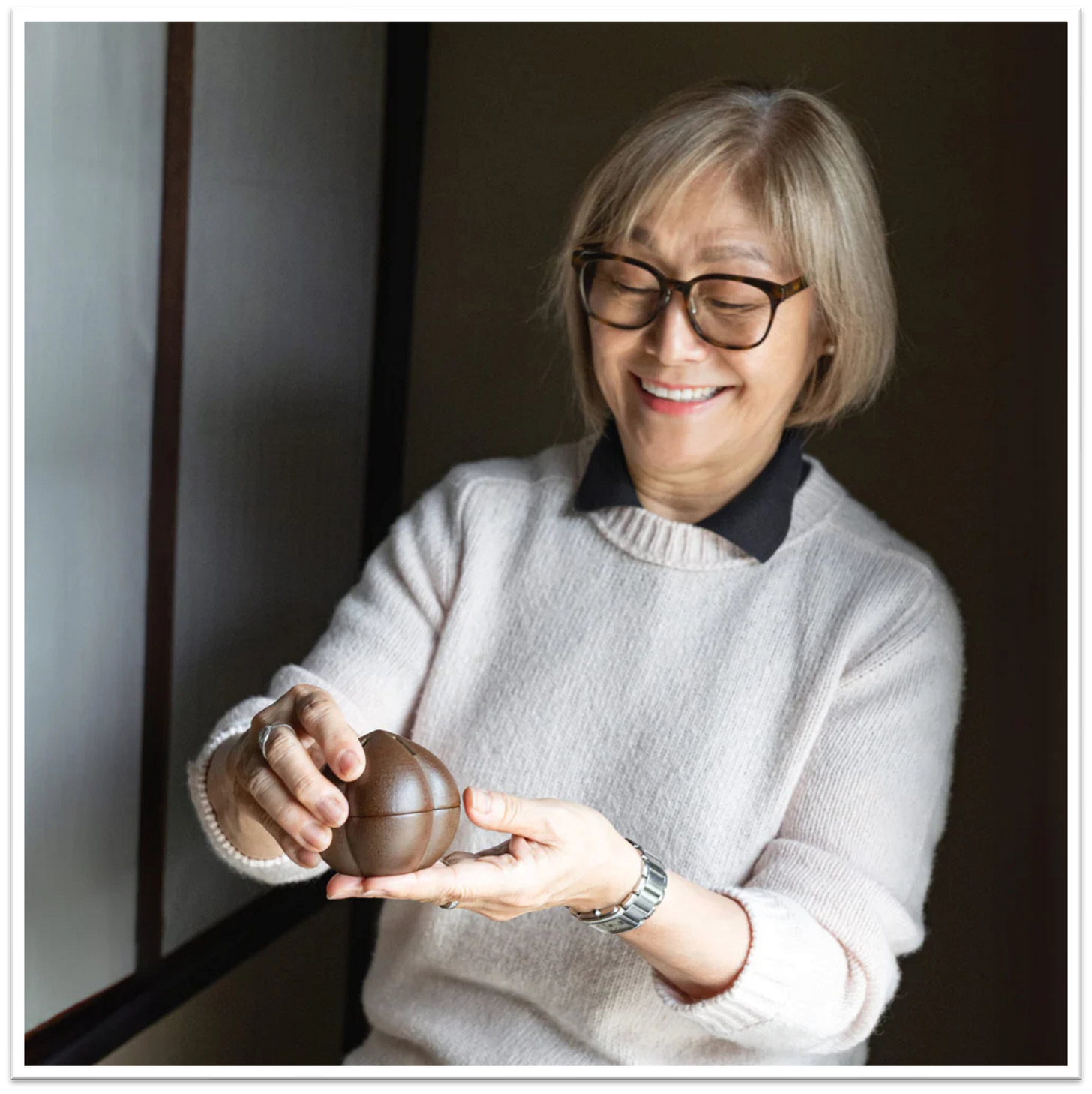
P: POJ describes itself as a bridge between Japan and the West, and between tradition and modern living. How do you balance authenticity and cultural integrity while making Japanese crafts accessible to a global audience?
T: My background in tech was to solve real-world problems through design, with a focus on strategy, so I was never a designer particularly interested in visual expression especially in the second half of my career. When we meet craftspeople —often through trusted networks, which is so important in Japan—we approach with humility and curiosity. Because I can communicate directly in their language, I don’t usually arrive with predetermined ideas. Instead, I listen: I want to understand their current situation, their techniques, their challenges, and their hopes for the future. What we create together is the natural outcome of supporting their own vision, rather than imposing ours.
This is also my life’s work. We don’t collaborate for just a season—we invest in building relationships that ideally last for many years. The craftspeople feel that level of commitment, and it’s through this mutual trust that we can make their work accessible to the world while preserving its authenticity and cultural integrity.
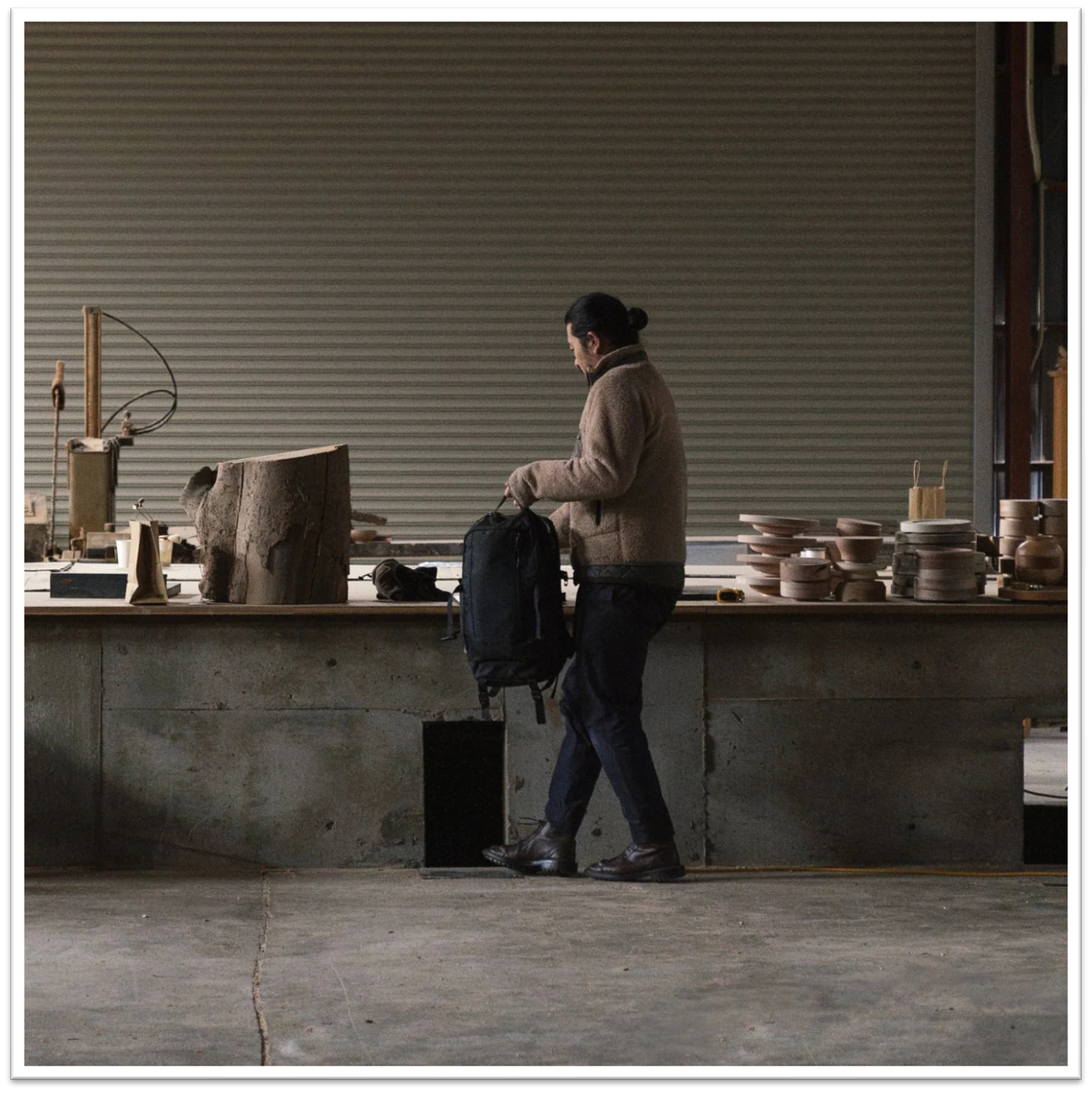
P: Many traditional crafts in Japan are struggling to survive. What do you see as the biggest challenges artisans face today, and how is POJ helping to address those?
T: At its core, the biggest challenge is economic: artisans simply don’t earn enough to make the profession sustainable, let alone attractive for the next generation. Without viable livelihoods, younger people understandably choose other paths.
At POJ Studio, everything we do is aimed at addressing that gap. On one side, we work with craftspeople to create products that resonate with today’s customers, generating higher income for them. On the other, we’re heavily investing in education—expanding programs like our Kintsugi Apprentice Program into other crafts. These initiatives not only preserve and spread knowledge internationally, but also give younger craftspeople the opportunity to teach and connect with people from around the world—something that can be both financially supportive and deeply inspiring for them.
Looking ahead, we also hope to establish permanent spaces outside of Japan, with a focus on Los Angeles and New York. These will serve as hubs—combining retail, showroom, and repair studios—that connect an international audience directly to the work we are building in Japan. Alongside this, our interior services allow us to bring craftspeople directly into customers’ spaces, outfitting homes, shops, and restaurants with authentic craft. Together, these efforts create a sustainable ecosystem that ensures Japanese craftsmanship is not only preserved but continues to thrive.
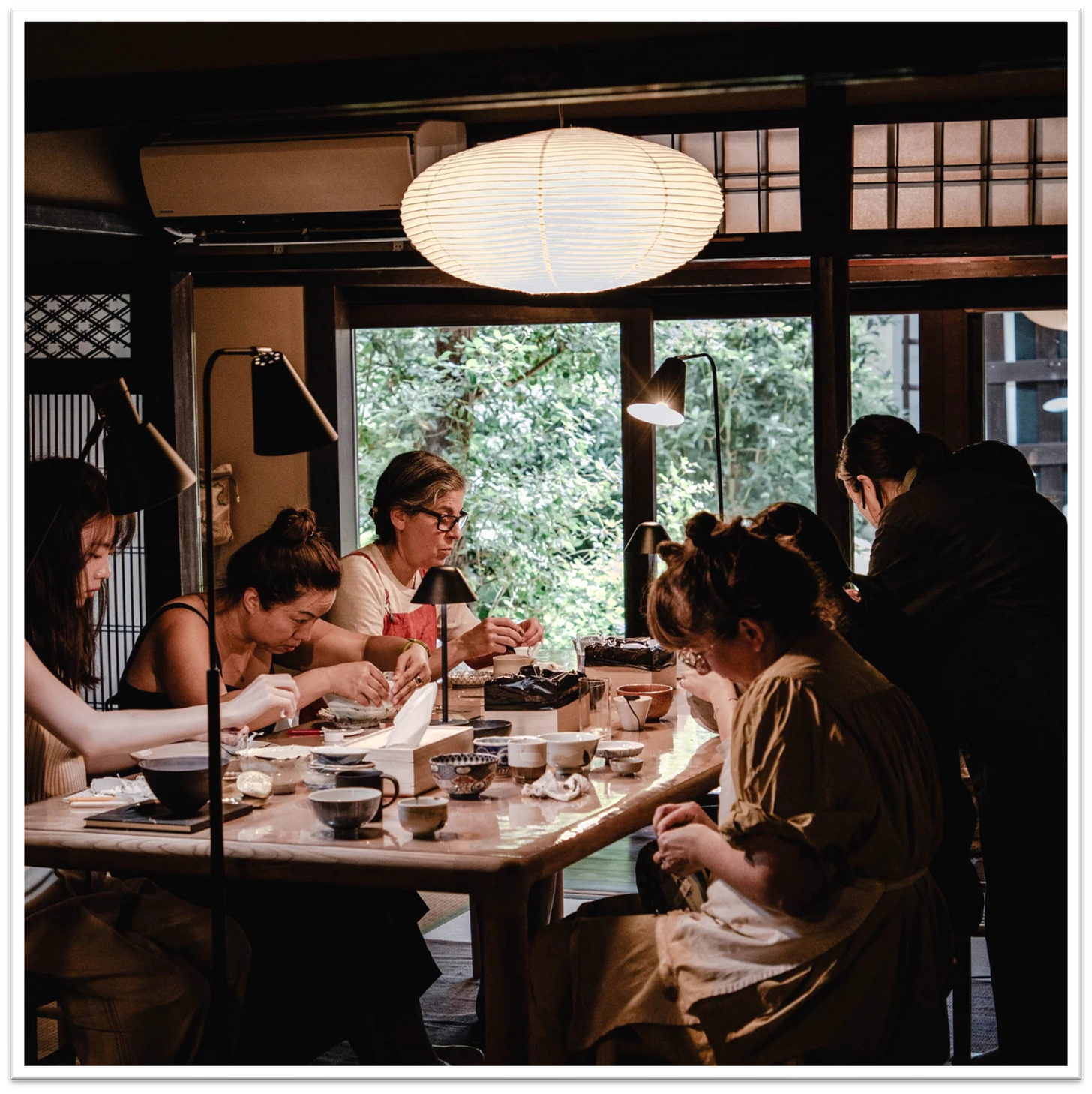
P: Tell us about the craftspeople that you work with.
T: Today, we work with around 70 craft partners and add 10–20 each year. Our collaborations span a wide range of techniques—from woodturning and natural dyeing to lacquer, pottery, and many more. This diversity not only enriches our collection but also helps showcase the incredible breadth of Japanese craftsmanship to a global audience.
Kintsugi has become one of POJ’s signature offerings, from self-paced kits to in-studio apprenticeships in Kyoto and Long Beach.
P: Why did you decide to focus on this Japanese art of gold repair?
As a problem-oriented designer, my first thought—before we even decided what to sell—was that shipping fragile pieces like tableware would inevitably lead to breakage. Rather than treating that as an afterthought, we decided to begin with the solution: introducing kintsugi, a repair method that is slow, entirely natural, and rooted in lacquer—a traditional craft industry itself facing decline.
Starting with repair set the tone for POJ Studio: we are not about encouraging endless consumption, but about cherishing the objects that make a house a home and extending their lives. Our Kintsugi Apprentice Program builds on this by training repair professionals worldwide, so that customers don’t need to ship broken pieces all the way to Japan—they can access sustainable repair closer to home. Looking ahead, we also hope to expand into teaching additional repair methods beyond kintsugi, continuing to strengthen this culture of care.
P: You’ve recently launched POJ Studio Interiors, a new business arm that integrates Japanese craftsmanship into architectural and interior projects. Can you share your vision for this initiative?
T: We’re really excited about this new service. With POJ Studio Interiors, our goal is not only to create more authentic spaces for our international customers but also to bring them closer to the craftspeople themselves. Instead of limiting cultural exchange to a short talk session or exhibition opening, we want people to experience the artisans’ work firsthand, in the context of their own homes and spaces. For us, it’s about creating environments that are both beautiful and deeply connected to the traditions and people behind them.
P: What do you believe is the future of craft?
Since I first started this business alone, I’ve seen craft become a more widely discussed and appreciated topic. In a world where technology is distancing us from nature and even replacing many white-collar jobs, what remains essential for humanity is the ability to connect—with other people, with nature, and with ourselves—through the work of our own hands.
Craft sits right at that intersection. While it is bittersweet, as many workshops have already closed, I believe we are at the beginning of a slow but steady revival. My hope is that craft will not only survive, but play a vital role in grounding us in a more human, connected, and sustainable future.
P: Tell us about your space in Los Angeles, and now the Pop-Up in Tribeca
T: I believe it’s vital for us to create spaces where true in-person interaction can happen. While we work toward establishing a permanent base, we’ve been exploring Los Angeles through pop-ups—first in Echo Park, then Long Beach, and now in Culver City, which is another exciting and creative part of the city. At the same time, New York has always been an important market for us, so bringing our work to Tribeca at 180 The Store is especially meaningful.
In both cities, we’re not only offering retail but also kintsugi hands-on experiences, so people can engage directly with the philosophy and practice behind the craft. For us, these spaces are about much more than showcasing products—they’re about creating meaningful connections and giving people the chance to experience Japanese craftsmanship in a very tangible way.
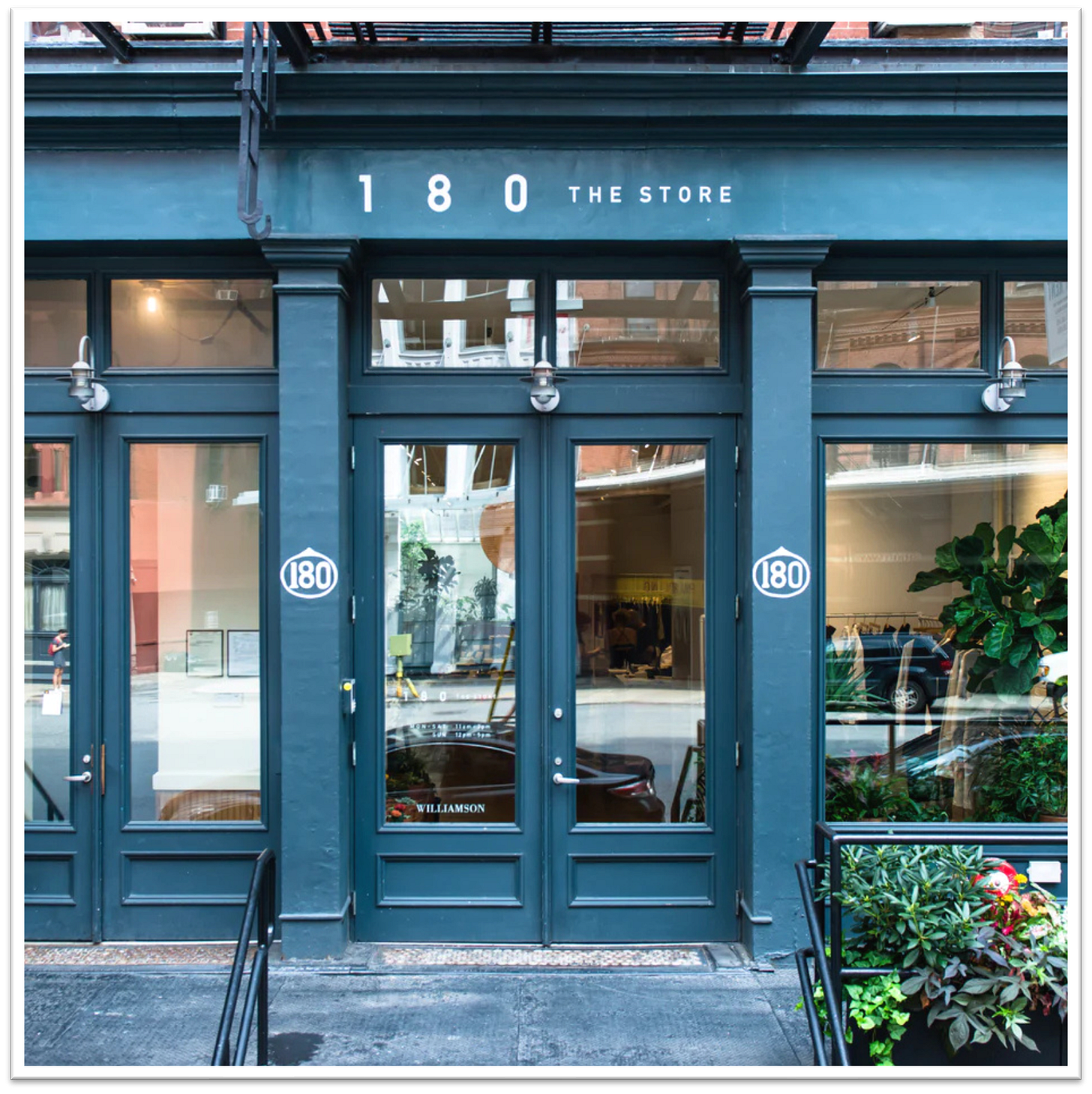
P: What’s next for POJ Studio? Are there new crafts, collaborations, or experiences you’re excited to introduce in the next year?
T: Internationally, our goal is to establish permanent spaces that combine retail, showrooms, and repair studios—true hubs that serve as bridges to Japan and allow people to experience craft firsthand. These spaces will also give us opportunities to bring craftspeople abroad for demonstrations and to help outfit interiors with their work. In the meantime, we’re continuing to explore global cities through pop-ups, with upcoming plans in Hong Kong, Zurich, and possibly London.
Locally in Japan, we’re excited to expand our “craft villages” into new disciplines. In the Kyoto countryside, we’re opening a woodworking school alongside a manufacturing facility for wooden furniture, which will launch next year. The following year, we plan to establish a similar base for pottery—creating ecosystems where traditional skills can be learned, practiced, and shared with the world.
THANK YOU TINA!



